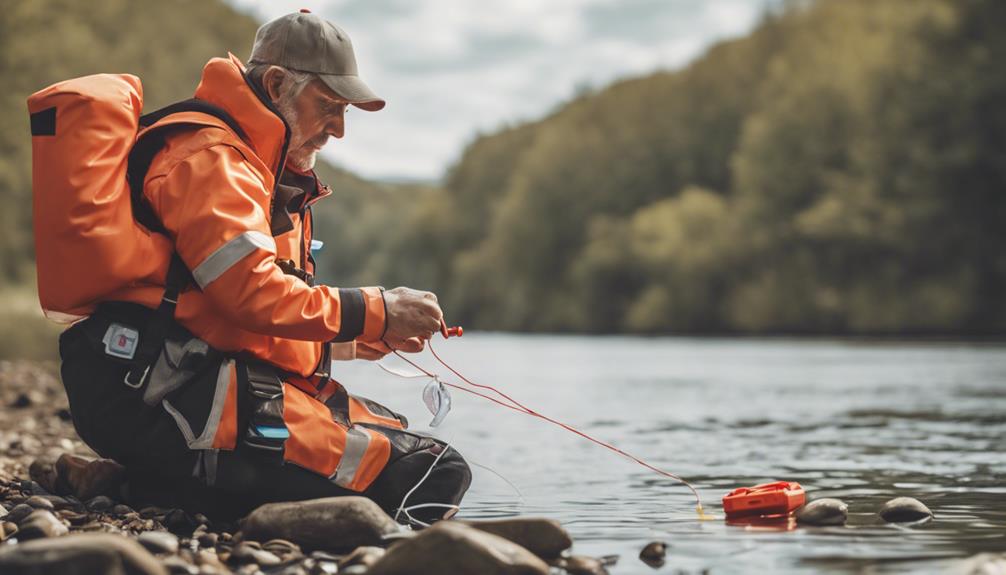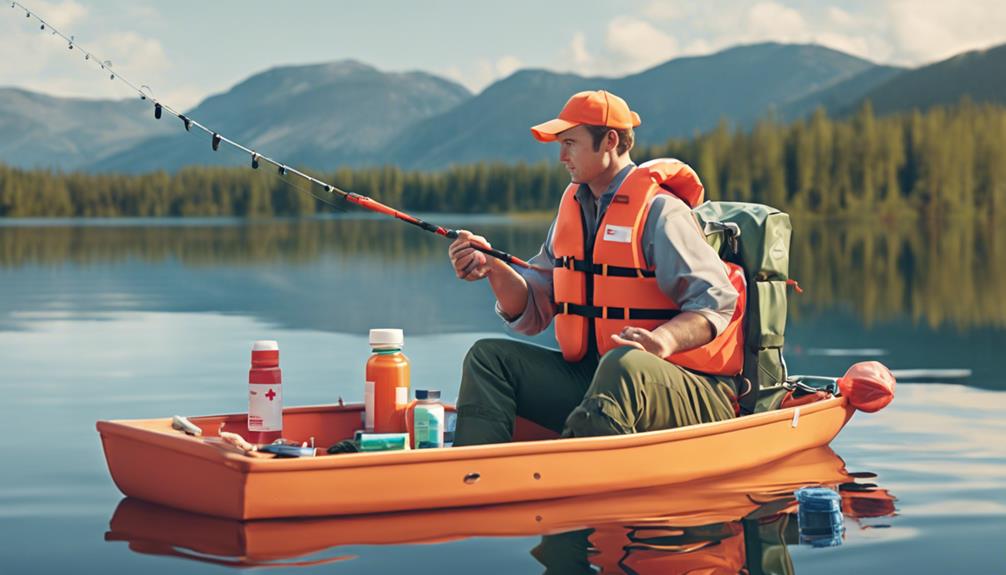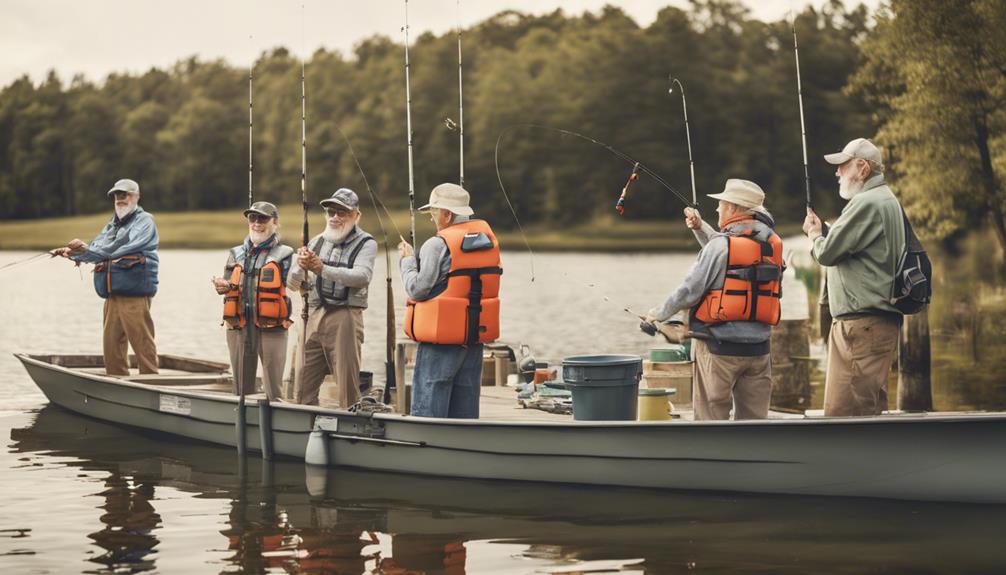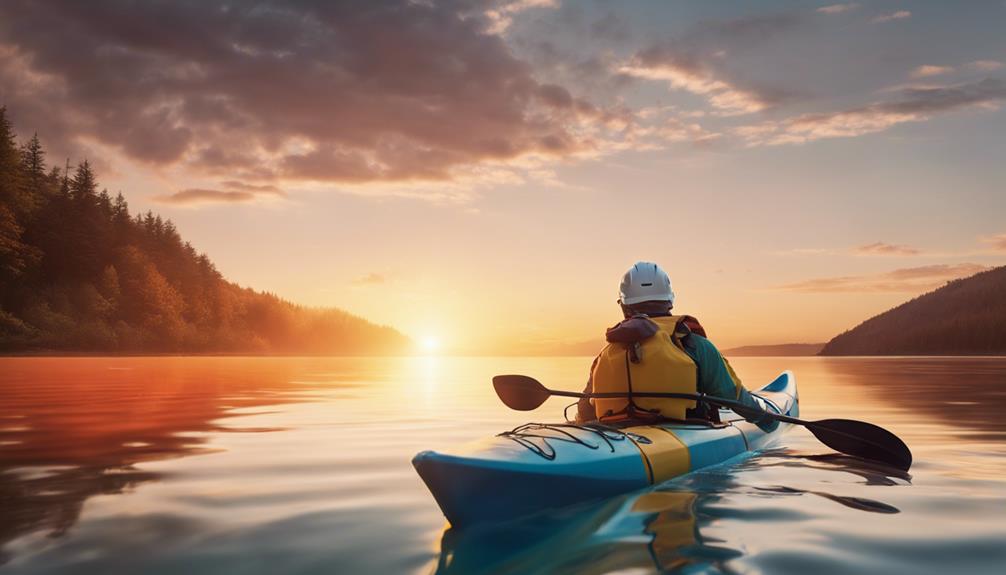When you're out on the river, it's essential to keep your wits about you. From navigating swift currents to handling unexpected wildlife encounters, river fishing comes with its set of challenges.
But fear not, there are ten key practices that can make your fishing experience safer and more enjoyable. These practices encompass everything from understanding river dynamics to being prepared for emergencies.
Stay tuned to discover how you can enhance your safety while casting your line into the flowing waters.
Understanding River Currents
To understand river currents, pay close attention to how they flow and interact with the environment. The water flow in rivers can be complex and powerful, posing hazards to those who aren't prepared. When navigating these currents, it's crucial to have a solid understanding of their patterns and potential dangers.
One of the key strategies for safely navigating river currents is to stay alert and observant at all times. By scanning the water ahead, you can identify any obstacles or changes in flow that may require quick adjustments to your course.
Hazards such as underwater rocks, swift currents, and eddies can catch even experienced anglers off guard. To mitigate these risks, consider studying the river's topography before heading out. Look for signs of faster-flowing sections, submerged obstacles, or areas where the current converges or diverges. By planning your route in advance and anticipating potential challenges, you can navigate the river more safely and effectively.
When faced with strong currents, use the natural features of the river to your advantage. Position yourself strategically to take advantage of eddies or slower-moving areas where the current is less forceful. By understanding how the water moves around obstacles and bends, you can conserve energy and focus on enjoying your fishing experience. Remember, a cautious and informed approach to river currents is key to staying safe on the water.
Proper Gear and Equipment
When preparing for river fishing, ensure you have the proper gear and equipment to enhance your safety and fishing experience. Proper gear maintenance and storage are crucial to ensure your equipment functions correctly when you need it. Before heading out, inspect your gear for any damage and make sure everything is in working order. Store your gear in a dry and secure place to prevent any deterioration.
Selecting the right equipment is key to a successful fishing trip. Choose a rod and reel suitable for river fishing, considering factors like the water depth and the type of fish you're targeting. Proper care of your equipment will extend its lifespan and maintain its performance. After each use, clean your gear with fresh water to remove any dirt or debris that could cause damage.
Additionally, having the right safety equipment is essential. A well-fitted life jacket is a must, especially when fishing in moving waters. Make sure it's in good condition and meets safety standards. Other important items include a first aid kit, a whistle for signaling, and a flashlight for emergencies. By having the proper gear and equipment, you can enjoy your river fishing adventure safely and successfully.
Weather Awareness and Preparation
Stay vigilant and informed about the weather conditions before embarking on your river fishing excursion. Weather can change rapidly, affecting your safety on the water. Prioritize checking weather forecasts and updates before heading out. Strong winds, lightning storms, or heavy rain can pose significant risks while fishing. Develop navigation skills to read weather patterns and understand how they might impact your fishing trip.
In case of unexpected weather changes, be prepared with emergency signals to call for help if needed. Carry essential survival techniques and first aid supplies to handle any emergencies that may arise due to adverse weather conditions. It's crucial to pack waterproof gear and extra layers to stay warm and dry in case of rain or sudden drops in temperature.
Remember that safety should always be your top priority when fishing in rivers. Being aware of the weather forecast and having the necessary preparation can make a significant difference in ensuring a safe and enjoyable fishing experience. Stay proactive, stay informed, and be ready to adapt to changing weather conditions while on the water. By prioritizing weather awareness and preparation, you can minimize risks and maximize the enjoyment of your river fishing adventures.
Safety in Wading and Footing
Prioritize your stability and safety by maintaining a firm footing while wading in the river. Proper footwear is essential for river fishing to provide traction and protect your feet from sharp rocks or slippery surfaces. Choose sturdy wading boots with felt or rubber soles to grip the riverbed effectively. It's crucial to ensure that your footwear fits well to prevent blisters or discomfort that could compromise your balance.
When wading in the river, practice balance techniques to avoid losing your footing. Keep your knees slightly bent and your center of gravity low to improve stability. Take slow and deliberate steps, testing the ground before putting your full weight down. Use a wading staff for added support, especially in fast-moving waters or uneven terrain. By distributing your weight evenly and staying mindful of your surroundings, you can navigate the river safely.
Remember to always face upstream when wading to maintain better control and stability. Avoid crossing swift currents that could sweep you off your feet. If you encounter deep water, consider using a wading belt to prevent water from filling your waders and dragging you down. By practicing proper footwear selection and balance techniques, you can enhance your safety while wading in the river and enjoy a successful fishing experience.
Wildlife Encounters and Precautions
To ensure your safety while river fishing, it's important to be aware of potential wildlife encounters and take necessary precautions. When you're out in nature, you may come across various animals that can pose risks if proper care isn't taken. Understanding wildlife behavior and knowing how to handle such encounters is crucial for your safety. Here are some key points to keep in mind:
- Stay Alert and Observant: Always be aware of your surroundings and keep an eye out for any signs of wildlife nearby. By staying alert, you can avoid surprising animals and potentially dangerous situations.
- Respect Wildlife's Space: Remember that you're in their territory. Avoid getting too close to animals, especially if they're showing signs of aggression or discomfort. Give them space to move away peacefully.
- Properly Store Food and Trash: Animals can be attracted to the smell of food, so make sure to store your food securely and dispose of trash properly. This helps prevent unwanted encounters with wildlife.
- Know How to React: In the event of an animal encounter, remain calm and slowly back away while keeping the animal in sight. Never turn your back on wildlife or run, as this may trigger a chase response.
Emergency Response Planning
In case of emergencies while river fishing, having a well-thought-out response plan is essential for ensuring your safety. When creating your emergency response plan, consider communication strategies and evacuation routes as crucial components. Firstly, ensure you have a reliable means of communication, such as a fully charged cell phone or a two-way radio, to call for help if needed. It's also wise to share your fishing location and itinerary with a trusted individual before heading out, so they can assist in case of an emergency.
Familiarize yourself with the area's evacuation routes before starting your fishing trip. Knowing the nearest exits or safe paths can be lifesaving in urgent situations. Additionally, have a clear plan on how to reach these evacuation routes from your current fishing spot. Stay attentive to any signs or markers that indicate the direction to safety.
During your fishing excursion, periodically review and rehearse your emergency response plan to keep it fresh in your mind. Practice contacting emergency services and communicating your location effectively. In the event of an emergency, stay calm, follow your plan, and prioritize your safety above all else. By proactively preparing for potential risks and having a well-structured response plan in place, you can fish on the river confidently while ensuring your safety remains a top priority.
Fishing With a Buddy System
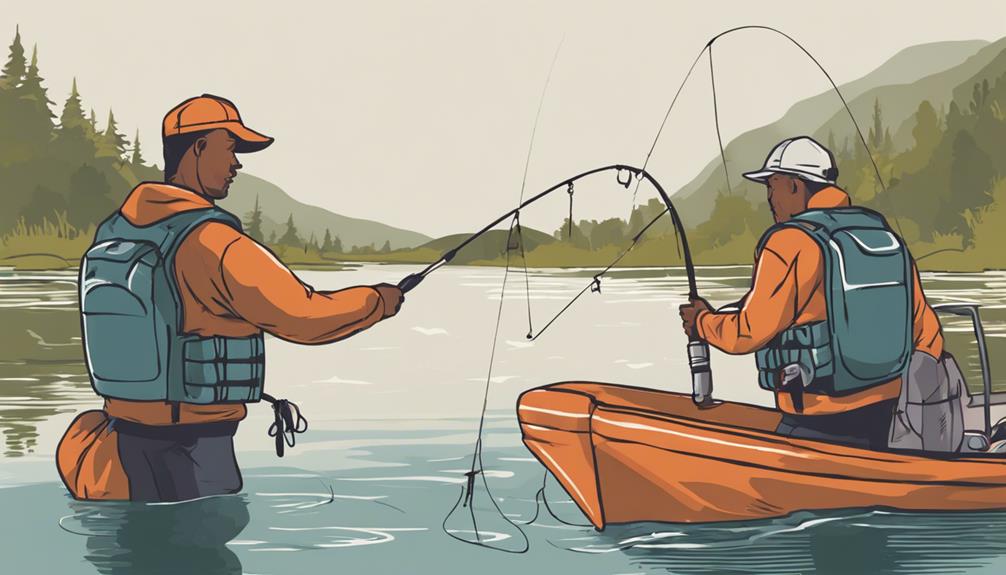
When it comes to river fishing safety, implementing a buddy system can greatly enhance your overall security and peace of mind. Having a fishing companion not only makes the experience more enjoyable but also provides an extra layer of safety in case of emergencies. Here are some key points to consider when fishing with a buddy system:
- Constant Vigilance: Keep an eye on each other at all times, especially in fast-moving waters where accidents can happen quickly.
- Water Rescue Preparedness: Make sure both you and your buddy are familiar with basic water rescue techniques in case someone falls into the river.
- Communication Plan: Establish clear signals or calls to communicate effectively while fishing, particularly if you need help or spot potential dangers.
- Shared Safety Gear: Ensure both you and your buddy have essential safety gear like life jackets and first aid kits readily available.
Leave No Trace Principles
Implementing Leave No Trace Principles is crucial for maintaining the natural beauty and integrity of river environments during fishing excursions. By following these principles, you can ensure that your presence has minimal impact on the delicate ecosystem and wildlife that call the river home. Practicing Leave No Trace not only demonstrates good environmental ethics but also sets a positive example for other anglers and outdoor enthusiasts.
To adhere to the concept of minimal impact, start by planning ahead and preparing properly for your fishing trip. Pack all your gear in a way that minimizes the risk of items being lost or left behind. When on the riverbanks, be mindful of where you step to avoid damaging vegetation or disturbing wildlife habitats. Properly dispose of any trash or waste in designated receptacles or by carrying it out with you.
Environmental ethics play a significant role in ensuring that future generations can also enjoy the beauty of rivers. Treat the environment with respect by refraining from littering, avoiding unnecessary noise pollution, and refraining from removing natural objects or plants from their habitats. Remember, the goal is to leave the river as pristine as you found it, if not better. By integrating Leave No Trace Principles into your fishing routine, you contribute to the preservation of these valuable natural spaces for all to appreciate.
Frequently Asked Questions
Is It Safe to Fish in a River During Heavy Rain or When Water Levels Are High?
Fishing in a river during heavy rain or high water levels can be risky. It's important to consider safety first. Rivers during storms can become unpredictable and dangerous.
High water levels pose risks like strong currents and flooding. Always prioritize your safety and be cautious when deciding to fish in such conditions. Remember, it's better to stay safe and wait for better weather than put yourself in harm's way.
How Can I Prevent Insect Bites or Stings While Fishing in a River?
To prevent insect bites or stings while fishing in a river, apply insect repellent and wear protective clothing.
If you do get bitten or stung, have first aid supplies on hand. Treat any swelling with appropriate medication or remedies.
Stay vigilant and take precautions to enjoy your fishing experience without the nuisance of insect bites.
Are There Any Specific Safety Precautions to Take When Fishing in Fast-Moving or Turbulent River Currents?
When fishing in swift currents, it's crucial to prioritize safety precautions. Be aware of the river's speed and potential rapids.
Always wear a life jacket, keep a safe distance from strong currents, and avoid wading in unfamiliar areas.
Stay alert and be prepared for unexpected changes in water flow. Your well-being is paramount, so take necessary steps to fish responsibly and enjoy the experience safely.
What Should I Do if I Get Caught in a Sudden Thunderstorm While Fishing in a River?
If you get caught in a sudden thunderstorm while fishing in a river, prioritize lightning safety.
Seek shelter immediately, away from open areas and tall objects. If no shelter is available, crouch low with your feet close together. Avoid bodies of water and metal objects.
Have emergency contacts and communication devices handy.
Stay informed about the storm's progress and be prepared to respond quickly to any changing conditions.
How Can I Safely Navigate and Fish in Areas With Submerged Rocks or Debris in the River?
When fishing in areas with submerged rocks or debris in the river, make sure you wear proper footwear for better traction. Stay safe by being cautious along the riverbank and being prepared for emergencies.
Navigate the river carefully by understanding the water currents and potential hazards. Always prioritize your safety and have a plan in case of any unexpected situations while fishing in these areas.
Conclusion
Remember, when fishing in rivers, safety should always be your top priority. By understanding river currents, having the right gear, being aware of weather conditions, and practicing proper wading techniques, you can enjoy a successful and safe fishing experience.
Always be prepared for emergencies, fish with a buddy system, and follow Leave No Trace principles to protect the environment.
With these best practices in mind, you can have a great time on the river while staying safe.
